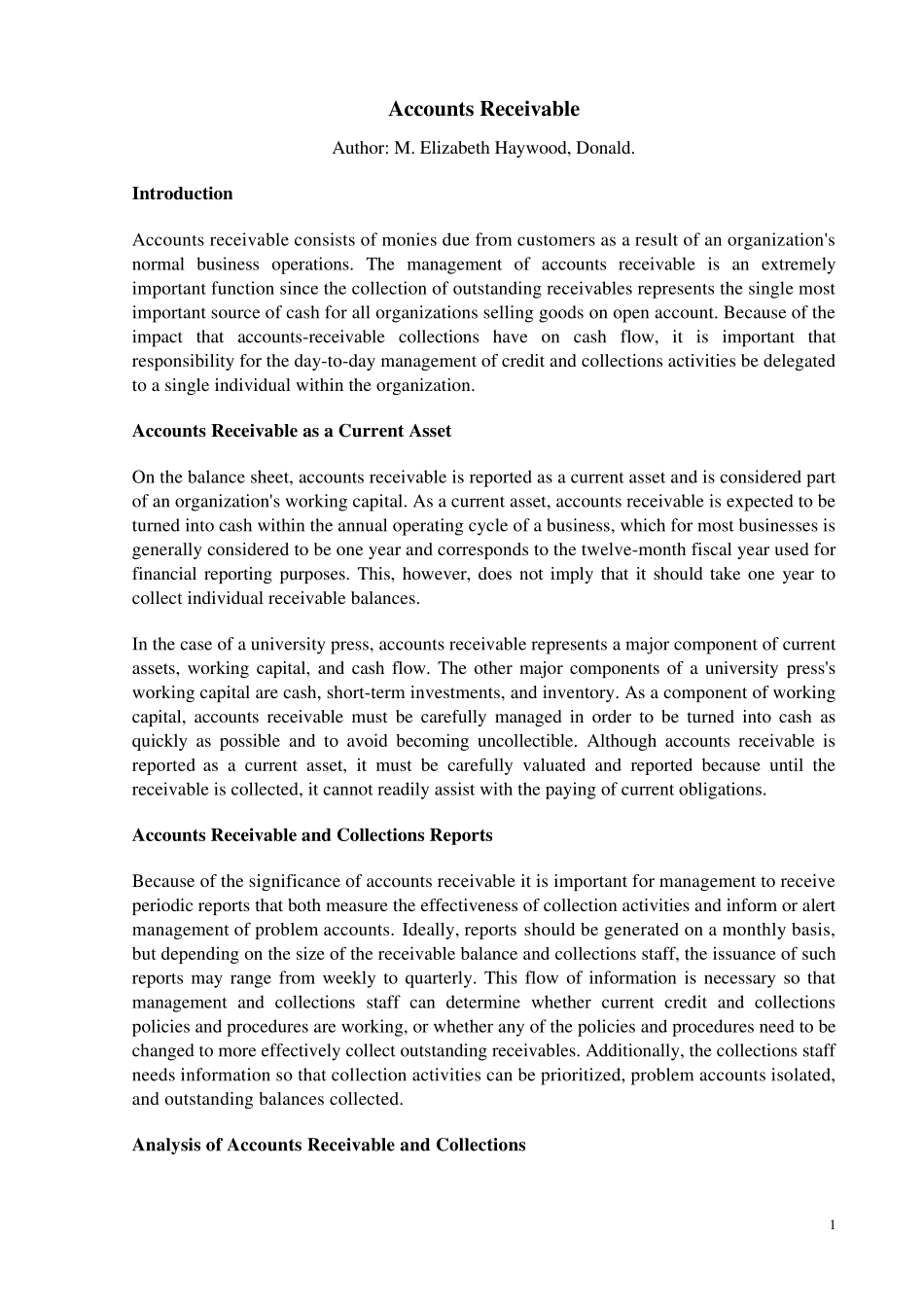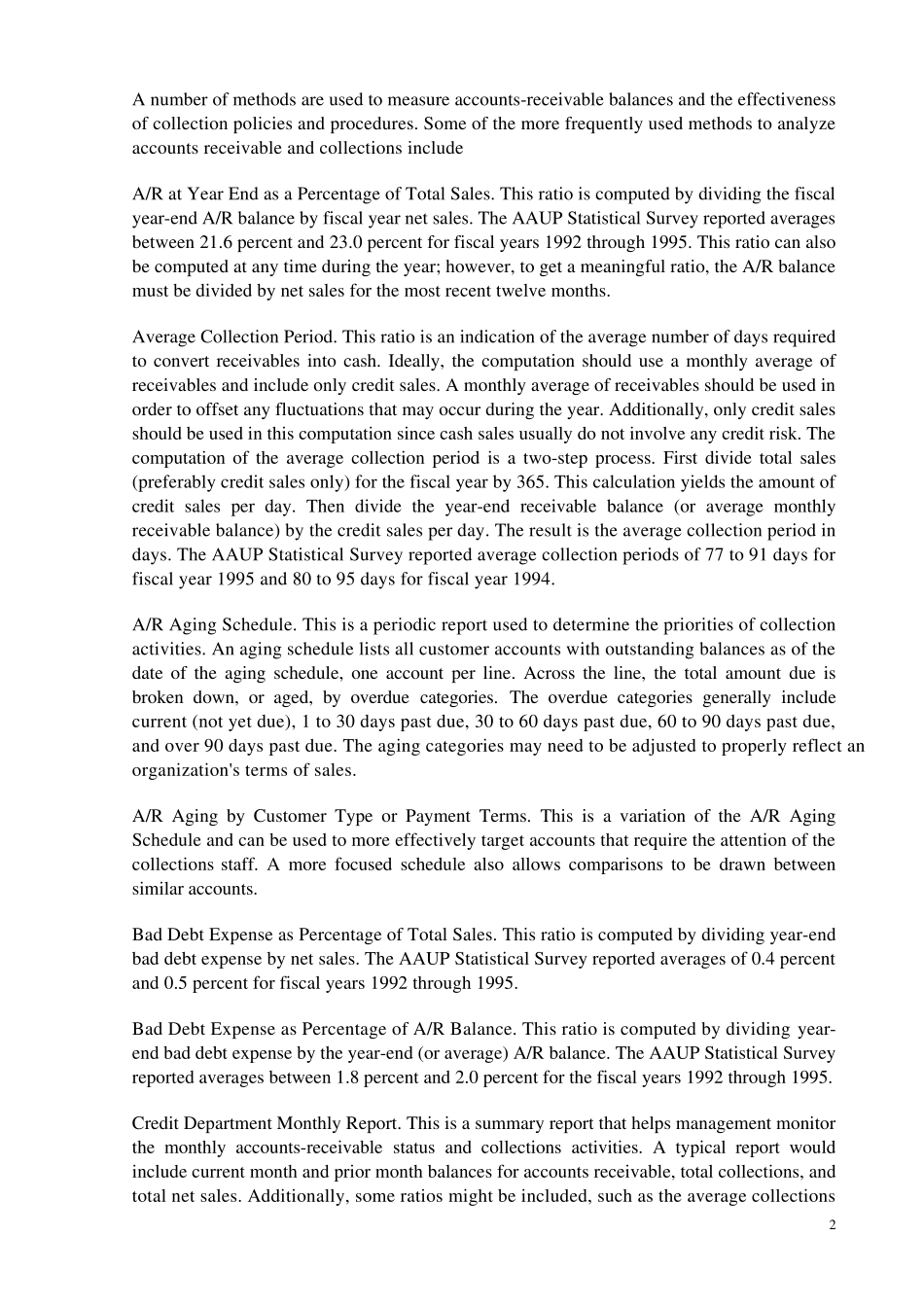1 Accounts Receivable Author: M. Elizabeth Haywood, Donald. Introduction Accounts receivable consists of monies due from customers as a result of an organization's normal business operations. The management of accounts receivable is an extremely important function since the collection of outstanding receivables represents the single most important source of cash for all organizations selling goods on open account. Because of the impact that accounts-receivable collections have on cash flow, it is important that responsibility for the day-to-day management of credit and collections activities be delegated to a single individual within the organization. Accounts Receivable as a Current Asset On the balance sheet, accounts receivable is reported as a current asset and is considered part of an organization's working capital. As a current asset, accounts receivable is expected to be turned into cash within the annual operating cycle of a business, which for most businesses is generally considered to be one year and corresponds to the twelve-month fiscal year used for financial reporting purposes. This, however, does not imply that it should take one year to collect individual receivable balances. In the case of a university press, accounts receivable represents a major component of current assets, working capital, and cash flow. The other major components of a university press's working capital are cash, short-term investments, and inventory. As a component of working capital, accounts receivable must be carefully managed in order to be turned into cash as quickly as possible and to avoid becoming uncollectible. Although accounts receivable is reported as a current asset, it must be carefully valuated and reported...


